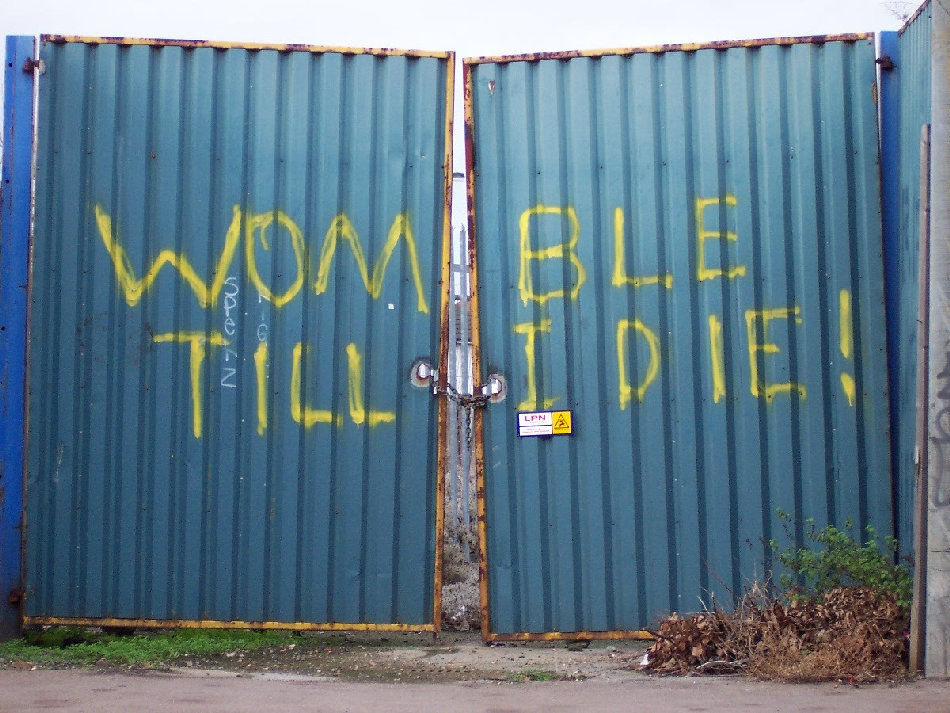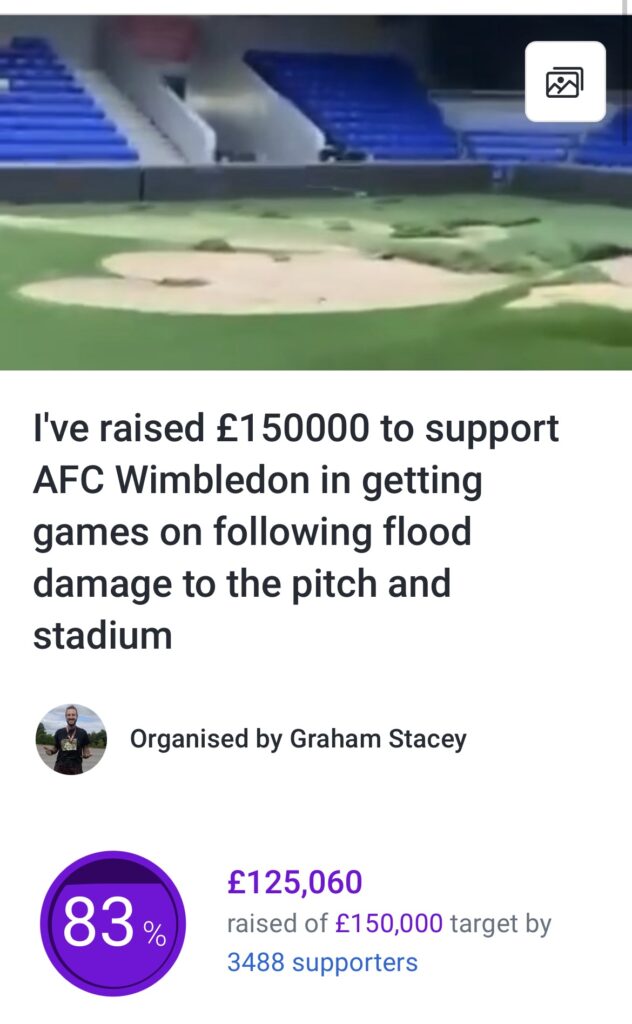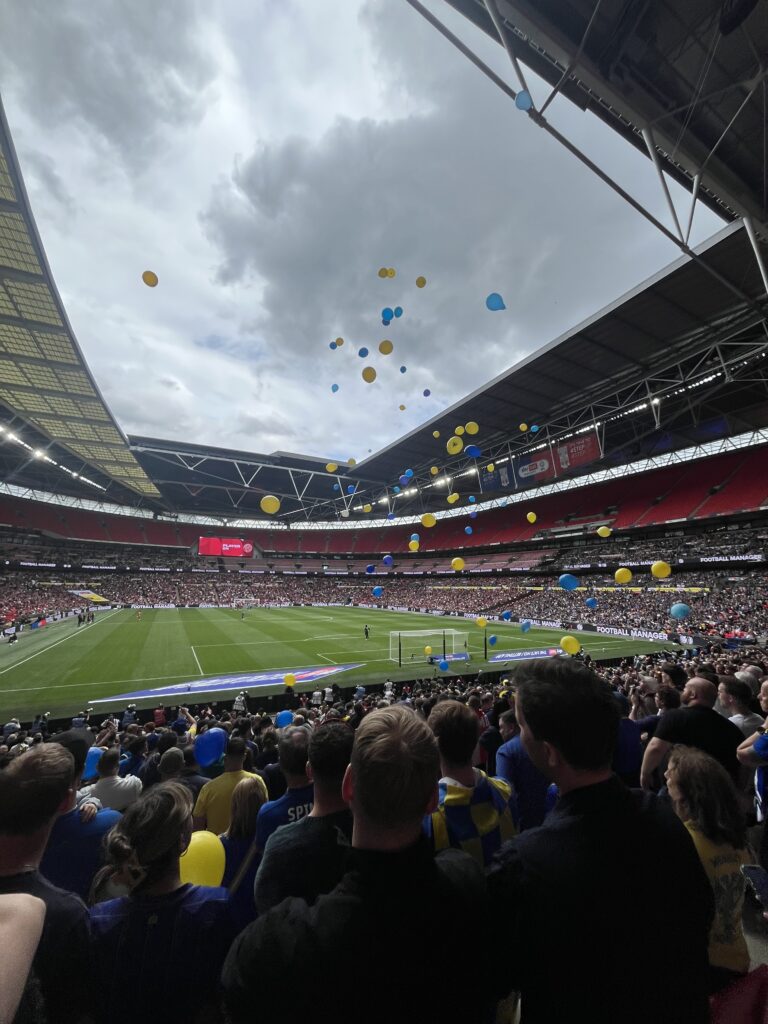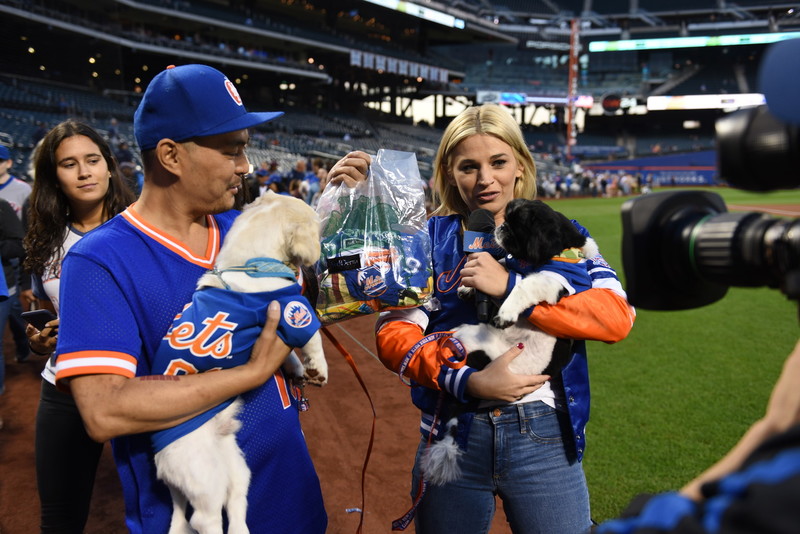AFC Wimbledon have been promoted to League One after a playoff victory over Walsall FC but to reach Wembley, they had to overcome one of their biggest challenges of their history: a flooded stadium. This captivating tale of resilience, community, and passion highlights the unique bond between fans and their team and serves as a powerful reminder of the heart and soul that drives football beyond the pitch.
Sunday’s 1-0 win in the League Two playoff final at Wembley sees AFC Wimbledon return to League One for the first time since 2022. Go back eight months, and this seemed a distant pipe dream, with nightmare circumstances threatening not only their next fixture but their entire season.
On 23 September 2024, the dedicated fanbase of AFC Wimbledon woke up on the eve of one of their biggest games in history – or so they thought. Preparations were underway for a visit from Premier League giants Newcastle United, the club with the richest owners in the Premier League. The fixture provided quite the contrast.
The fans woke up to a surreal scene, resembling an unplayable golf course rather than a football ground. Their stadium, Plough Lane, was submerged in water after relentless rain.
Ray Armfield, a dedicated volunteer for the club, says: “ The immediate area had something like three and a half months of rainwater in 9 hours and the local river was full so there was nowhere for the excess water to go.
“It’s like the old schoolboy science thing. If you drop some Mentos into a bottle of Pepsi and watch it all burst up, that’s kind of what happened really.”
This didn’t just threaten the match the next day, but the whole foundation of a club built on the fans’ passion and resilience. This disaster once again showed Wimbledon supporters’ invincible spirit.
Overcoming something as a community is nothing new for AFC Wimbledon. They’re considered the most successful fan-owned club in English football, established by supporters after Wimbledon FC relocated to Milton Keynes, leaving them without a team. Fans created The Dons Trust, which now has over 4,000 members who can vote on important club decisions for just £30. Overcoming significant obstacles, the club achieved six promotions, becoming the first team created in the 21st century to return to the English Football League. Despite facing corporate challenges similar to major clubs like Manchester United, including stadium reconstruction and financial struggles during the pandemic, AFC Wimbledon persevered.

Anonymous AFC Wimbledon supporter
In these dark times for the club, the burden lies on the fans, who aren’t merely rooting for their team but are actively shaping its future as stakeholders.
“We woke up to these photographs of the pitch and it looked like a prank because it looked so unbelievable,” says Graham Stacey, who’s an ex-representative on the Dons Trust Board. He describes how the flooded pitch looked “like a golf course, like a bunker in the middle of our pitch.”
When pictures began to spread and national news began to cover the story, Wimbledon fans quickly realised it was no joke. After nine hours of consistent rain, 100,000 litres of water had to be pumped from Plough Lane. With the club’s limited funds, there was concern that their stadium might not be usable for the rest of the season. However, some fans could not just sit back and watch.
“Do we need to go down with a mop and bucket?” Graham thought – but he decided to pursue a more simple but effective idea. He set up a ‘Go Fund Me’ page, initially feeling a bit ‘cheeky’ putting the initial goal at £10,000.
But what happened next was unprecedented: an individual donation of £15,000 appeared.
“Newcastle United came up. I thought it was a joke, but £15,000 – that’s an expensive joke.”
This donation didn’t just help the cause but also garnered attention, and within a few hours, it surpassed the original goal by five times the amount. Graham had to tell the club: “We’re going to need a bank account to put this in because I don’t want it going in mine. My bank manager will have a fit.”
Once the page reached £120,000, Wimbledon could hire specialist water trucks, it meant the three cancelled home games would be covered for the revenue they lost, could pay-out the insurance excess and much more.

“We don’t have a sugar daddy, so when things like this happen, we have to pay for it. We are the owners, so it has to come from somewhere.”
With such a substantial amount of money, Wimbledon needed to trust their board to make the right decisions. With a history of making decisions as a fanbase, this didn’t seem like a challenge. Ivor Heller, one of the founding four members of AFC Wimbledon, said: “Collaboratively, there’ve been a couple of things we’ve done in the past. One of them was we had to vote to sell Kingsmeadow (Wimbledon’s ground prior to Plough Lane) to be able to buy our land.
“To do that, we had to get 75% of our eligible fans to vote.” This process includes fans volunteering to run the vote and ensuring as many members as possible can have their say.
Just like in politics, a fan-owned club must remain democratic; therefore, a constitution is necessary. The fans created it themselves, and Ivor adds that to keep it relevant to the modern game, “we make amendments to it, and we do that formally and legally; you can’t just make it up as you go along.”
The club is extremely important to many people, including Ivor, who notes that many fans sacrifice parts of their personal lives to keep the club afloat. “It certainly cost me a business, and there are some out there who say it cost me my marriage. I don’t think it did, but it probably didn’t help.” This candid remark highlights how much the club means to its supporters and the lengths they are willing to go to save it. The flooding incident was just another challenge in a long history of resilience.
Being a fan of AFC Wimbledon is not merely a pastime; it’s a lifestyle. Ray Armfield, who is in charge of the Wimbledon Old Players Association (WOPA), an organisation that connects players and staff of both Wimbledon FC and AFC Wimbledon, embodies this commitment.
“I’m also part of a group called WISH. We love our acronyms here: Wimbledon Sporting History. There are about 40 of us who are all volunteers.” Ray expresses his love for Wimbledon through his volunteer work, claiming no expenses. He conducts stadium tours and organises events that bring together former players, driven by his passion for sharing the club’s history.
“It’s the greatest story in football. I know that sounds a bit cheesy and boastful, but I’ve been a Wimbledon fan for 50 years, and I think I’ve seen us play in 12 or 13 divisions. So, I think that’s a real rollercoaster journey.”
In addition to the stadium tours, Ray has set up a museum within the ground, fully aware of the corporate benefits it brings to the club.
One aspect that the media may overlook is the extent of the flooding’s impact. The club shop, the museum, and club offices were all affected; it wasn’t just the pitch that suffered.
“Everything in and around the ground was ankle-deep in water for several hours.”
“So, if people think, ‘Oh, you know, you patched your pitch up and everything’s fine,’ that’s simply not the case. It’s shocked us a bit.”

This flooding was yet another corporate loss that the club could ill afford. Despite the difficulties, through the fans’ efforts, the museum and stadium tours are set to be back in business, though it took several months to recover. It’s individuals like Ray that ensure the club continues to look forward.
“Our staffing levels are quite cut to the bone already. We didn’t just have a group of people waiting around for something to happen; it was a team of overworked individuals having to do even more when they didn’t need to. So, yes, it did bring people together.”
Their unity showcases the power of the football community in overcoming adversity. From Premier League teams sending £15,000 donations to 10-year-old boys contributing their pocket money, the bonds within this community are strong. AFC Wimbledon has faced many challenges over the years, but its success is due to fans coming together in times of need.
Graham Stacey feels fortunate that his club doesn’t have self-indulgent owners. “It’s like going to McDonald’s and saying, ‘I want my money back. I didn’t like those chips.’ You have no say. You can’t dial up Ronald and ask him to leave because he’s not listening.”
The deep emotional connection this fanbase has with their club guarantees that it will not perish; not even a flood can defeat them. When Ivor started working for AFC Wimbledon, he realised: “The club is more about the fans than anything else.”
AFC Wimbledon’s model of collective ownership and resilient attitude serves as a powerful lesson for modern-day football clubs. With limited funds, Wimbledon still manages to run a charity. Ray Armfield says, “They started with literally one table outside the supermarket collecting food, and now it’s a multi-million-pound operation.”
Now set for a League One return, this club exemplifies what can be accomplished when people come together, and the club and its fan have one of the greatest love stories in sport.
“There’s an expression: ‘We are Wimbledon,’ that’s us, the fans.” – Graham Stacey.



